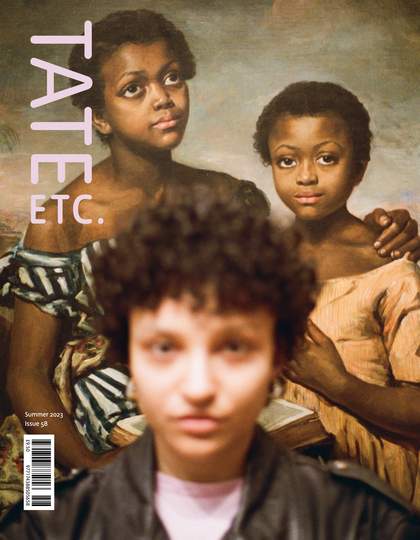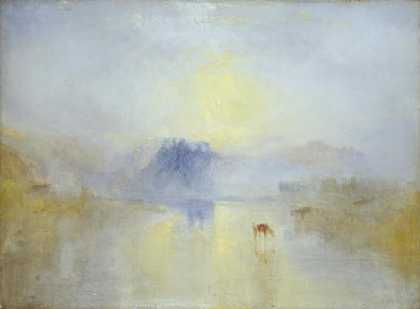
Vera Spencer
Artist versus Machine (c.1954)
Tate
The paper cards used to create this collage by the artist Vera Spencer may look unassuming, but the idea behind them is monumental. Around 1800, the French merchant and weaver Joseph Marie Jacquard first developed the automated loom, a machine which used perforated paper cards to store advanced weaving patterns. These perforations – a series of holes or not-holes – created the world’s first large-scale system of binary data storage. Jacquard’s loom went on to inspire British mathematician Charles Babbage to design the Analytical Engine, the first punched-card calculator and a precursor to the modern computer – the potential of which was grasped by mathematician Ada Lovelace, regarded as the first computer programmer. The punched cards of the Jacquard loom not only played a key role in the European industrial revolution but also launched a wave of automation and digitisation that continues to affect human life in unpredictable ways to this day.
When Vera Spencer created Artist versus Machine in 1954, the punched card computer was about the size of an industrial loom, and the original Jacquard loom was still in use. She must have got her hands on a clapped-out deck of cards from a weaving mill and selected a small strip from it. She then painted the cards deep blue, orange and various shades of brown, and placed them on a vibrant orange, pink and green background. With her choice of fluorescent colours, the work looks almost digital (even though digital art only developed with screens several decades later). She left the painted cards intact but covered them with pieces of coloured paper, thus obstructing the weaving patterns with skewed and jazzy patches. In this way, she created three layers in her collage, with the punched cards hovering in the middle.
Vera Spencer was part of the British post-war avant-garde and was among a new generation of abstract artists who focused on the interplay of materials, colours and shapes on a painting’s surface, rather than its resemblances. Therefore, it probably wasn’t so relevant to her that her collage looks like a housing complex with lit windows. Instead, the title Artist versus Machine suggests an entry point: in this work, a battle is being fought. By modifying punched cards, Vera Spencer started up a material fight with the very tissue of automation. The same automation that today, with the invention of self-learning image and text-creating algorithms like Dall-E and ChatGPT, has reached the practices of artists and writers, challenging our very concept of creativity and ultimately threatening their work.
Although Spencer didn’t know what was to come, she may have sensed the strength and scope of these machines. By reaching in and grabbing their core tissue, manipulating it, and giving it a new context as an aesthetic material, Spencer fought back against automation with the artist’s means, resisting the digital and insisting on an approach that was in touch with the material world around her.
Artist versus Machine was presented by Tate Members in 2018.
Amalie Smith is a writer who lives in Copenhagen, Denmark. Her latest book is Thread Ripper, published by Lolli Editions.
To read more of our special feature celebrating Tate Britain's rehang, visit www.tate.org.uk/tate-etc/issue-58-summer-2023/alex-farquharson-tate-britain-the-state-were-in


